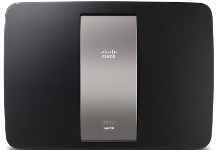2013: The year Gigabit Wi-Fi arrives


Las Vegas – Last year, Broadcom started shipping 802.11ac chipsets, which could reach 1.3Gbps speeds. Shipping routers and systems that could support 802.11ac, however, remained scarce. In 2013, that will all change. The day of Gigabit Wi-Fi is here.
That's because 802.11ac is finally seeing broad adoption. At CES Cisco/Linksys, D-Link, and Netgear are all releasing new 802.11ac compatible routers. In fact, you'd be hard pressed to find anyone who''s anyone in networking who isn't already shipping, or are about to ship, 802.11ac gear.
In addition, Broadcom is finally facing some serious competition on the Wi-Fi chipset front. Qualcomm. At CES Qualcomm is demoing its Atheros' StreamBoost 802.11ac chipset. D-Link has already agreed to ship routers with this silicon under the hood. Competition breeds both lower prices and more devices.
When it comes to Wi-Fi, standards politics can be as important as the technology in success. While 802.11ac still isn't a finished standard, it's much closer than it used to be. What's more important though is that the Wi-Fi Alliance and the Wireless Gigabit Alliance, (WiGig), have announced that they'll consolidate WiGig's certification and development under Wi-Fi Alliance.
Wi-Gig had been working on 802.11ad, the generation beyond 802.11ac. It will eventually bring speeds of up to 7Gbps to your Wi-Fi network. This consolation should smooth the path from today's 802.11n 300Mbps networks to 802.11ac and ad's gigabit and up speeds.
All of which is well and good, but you need computers, devices and tablets that can also work with 802.11ac. Sure, some people will buy 802.11ac adapters, but most people won't take the trouble. Fortunately for Gigabit Wi-Fi, the computer and device vendors are getting on the 802.11ac bandwagon. Most noticeably, it appears that Apple will be support 802.11ac in 2013. Other vendors will surely follow.
For all the sexiness of high speed, what may be more important about 802.11ac for businesses is, as Craig Mathias, principal of the Farpoint Group said, properly deployed, 802.11ac will bring higher " overall reliability and ... capacity. (PDF, registration required) This means meeting the diverse needs of a large and increasing number of users with a similarly growing number of devices per user (driven in large measure by today’s broadening shift to BYOD [Bring Your Own Device]) and with a robust mix of application
demands, and not simply provisioning the maximum possible point-to-point throughput."
Speed may be great, but for many stressed out network administrators being able to deliver more reliable and robust Wi-Fi to their users could be the best news they'll get this year. For them, 802.11ac can't come soon enough.
Related Stories: